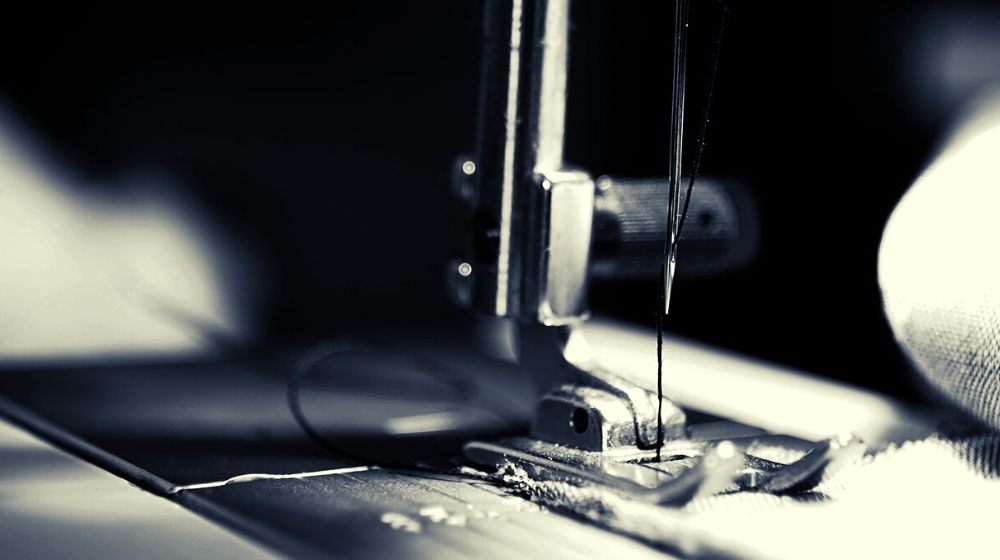Sewing machine parts may look complicated, but it's really easy to understand what their functions are. Here's a list of these parts and what they are used for.
RELATED: 10 Affordable Sewing Machines Recommended For Beginners
Basic Sewing Machine Parts and Its Functions
1. Presser Foot
The presser foot presses and holds the fabric down the feed dog. This gives stability while you sew. There should be a lever in your machine that will serve as its control.
The position may vary depending on your sewing machine brand. Also, there is a wide range of presser feet types but that needs its own section.
But to name a few, there's zipper, satin, button stitch, and overedge foot.
2. Feed Dogs
Basically, this mechanism is what feeds the material under the needle. These are the teeth-like metal underneath the plate.
What it does is as it goes up, it grabs the fabric and pushes it back. You may need to configure this often since you also need to lower the teeth down when you are sewing buttons.
You want to keep it up though for regular sewing. Check your user manual to see where the configuration switch is.
3. Needle
This is a pointed metal with a hole at the other end where the thread is inserted. Gas is to a car and the needle is to a sewing machine.
Of course, every part is essential but without this, there won't be a “catalyst.” Just make sure that it is screwed tightly so it won't loosen up during the sewing process.
4. Needle Clamp

This is what holds and tightens the needle. It makes sure the needle is steady and won't move during the sewing process.
5. Needle Plate
This is the biggest plate you will see at the bottom of the sewing machine. This prevents the fabric from going down into the machine.
There are also some machines which plate has measurements inscribed that will be helpful for beginners. The plate also varies on the type of machine you are using: the front-loading and top-loading machines.
Either of the two is fine, it's really a matter of perceived convenience.
6. Arm
The arm is the curved part at the top of the needle and contains the mechanism to operate it.
7. Bed
The bed is basically your work area. This is the flat section of the sewing machine and is where the feed dog is mounted.
This stabilizes the machine and is where you'll place projects.
8. Bobbin Winder
Normally, this is located at the top-right corner of your sewing machine. It does exactly what it's called which is to wind the thread to the bobbin.
RELATED: What Is The Best Leather Sewing Machine For You
9. Bobbin
The bobbin is the low spool that holds the lower thread. A stitch is formed by looping the bobbin and needle thread together.
10. Bobbin Case
It contains the bobbin and provides tension to the lower thread. As the needle thread is pulled around the bobbin case, it then bundles around the bobbin thread and pulls it right up through the needle plate.
11. Spool Holder
This holds the spool of thread in place and the cap that goes along with it is used to hold down the spool so it won't go flying off.
12. Slide Plate
Slide plate is the movable rectangle plate that covers the bobbin case. This part facilitates the removal of the bobbin case while keeping the machine steady.
13. Balance Wheel/Hand Wheel
The balance wheel sets the sewing machine in motion. Its function is to raise and lower the needle.
The motor powers the wheel but can be operated by hand to adjust sewing needle height. Most sewing machines have this wheel placed on the right side of the sewing machine.
14. Pattern/Stitch Selector
This function lets you choose the stitch type to use. Most sewing machines can do straight, zig-zag, and embroidery stitches.
15. Reverse Lever
This lever enables the machine to move backward or in reverse. This lets you jump to any portion of the project at will.
If you want to see some visuals of each part, check out this video by My Sewing Style:
Upon purchasing your first sewing machine, make sure you study it from top to bottom. The best recommendation is you buy a simple, mechanical machine that is easy to maintain if you are just starting your sewing journey.
What's important is to know it inside out so you'll know how to troubleshoot it when problems arise. Knowing a sewing machine's components will help you pinpoint that immediately.
Knowing the parts means knowing the machine's full capability, too. Hope this helps!
What sewing machine parts did we miss? Share your thoughts in the comments section below!
UP NEXT: